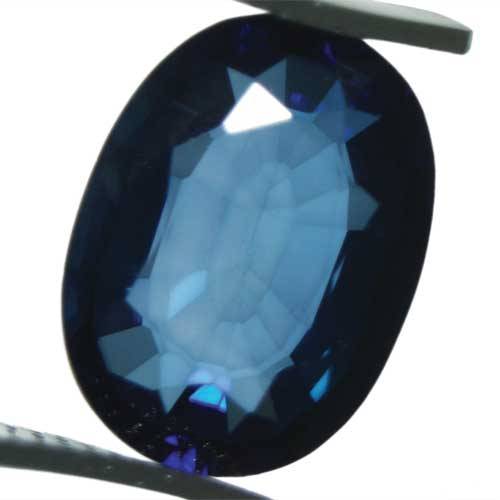|
Gemstones
Articles from GEMSTONES - LOOSE (254 Articles), GEMMOLOGICAL SERVICES (22 Articles)

If jewellers do not know what treatments are being done how can they disclose these to customers?
Blue sapphire and its treatments
Posted May 02, 2013 |
There have been more developments in gemstone treatments in the past 15
years than in the previous 50, and many of these concern sapphires and
rubies.
While sapphires are often treated, don’t think of "treatment" and "enhancement" as dirty words – various treatments allow many more stones to be used as gemstones, improving colour, transparency and mechanical stability, and also help to create stunning optical effects like asterism, which refers to the stars found in star sapphires.
Treatments also allow jewellers to cater for their customers’ budgetary requirements, and retailers should feel protected by legislature that states that all treatments must be disclosed, according to the Australian Competition and Consumer Commission (ACCC).
"The ACCC believes that a person could reasonably expect that any treatment of gemstones to enhance their aesthetic appearance and value will be disclosed to them if the treatment is either not permanent or creates special care requirements. For example, treatments such as diffusion coating, the application of colourless oil and epoxy-like resins and fracture-filling."
Full details of this ruling can be found on the ACCC website.
Gemstone associations around the world, such as the American Gem Trade Association (AGTA), the American Gem Society (AGS), the Thai Gem and Jewelry Traders Association (TGJTA) and the International Coloured Gemstone Association (ICA) also demand full disclosure from their members.
It is important to buy gems from a trusted and knowledgeable supplier. If jewellers do not know what treatments are being done how can they disclose these to customers? Lack of disclosure can only lead to a loss of consumer confidence, and lost revenue for the industry.
What can be done to improve a low-quality sapphire? The most common treatment is simple heating, where sapphires are placed in a crucible and heated. This method dates back more than 100 years and is done to improve colour, transparency or both.
Naturally, vividly-coloured, unheated blue sapphires demand a higher price as they are rarer.
A sapphire can also be heated with additives in a crucible, such as powdered alumina, titania and metal oxide iron (colouring agents) – gems are "cooked" for days or weeks at temperatures between 1600°C and 1800°C.
Atoms from the powdered mix, notably colouring agents, diffuse through the outer layers of corundum structure as a very thin surface layer. The gems are then polished with great care. If too much of the surface is removed, the lighter-coloured core of the gem is revealed.
Asterism may also be intensified when titanium is added to the crucible. These sapphires are said to be surface diffusion treated sapphires.
Sapphires can also be cooked with an additive called beryllium, which diffuses all the way through the lattice and can only be detected with sophisticated equipment.
This can lead to some valuations having the disclaimer, "While this ruby/sapphire displays no evidence of beryllium bulk diffusion treatment, the possibility that this may have occurred cannot be detected by standard gemmological-testing methods that are presently available to trade gemmologists."
Natural white sapphires can be coated with synthetic blue sapphire. Though quite rare, this is done to create a vividly-coloured sapphire with natural inclusions on the inside.
|
|
|
|